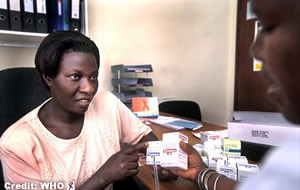 |
| Antiretroviral
treatment (ART) can keep people alive and transform HIV/AIDS from a death
sentence to a manageable chronic disease. |
 |
TASO
Clinic in Uganda, 2004 |
 |
WHO/Michael
Jensen |
|
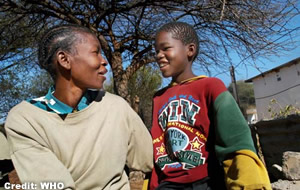 |
| Antiretroviral
treatment enables people living with AIDS lead a normal and productive
life. |
 |
Sheila
and her son are living with impacts of HIV like millions around the world.
Gaborone, Botswana, 2003
|
 |
WHO/Eric
Miller |
|
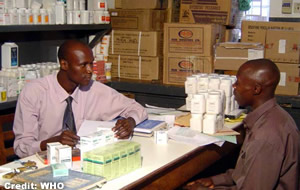 |
| WHO
and partners work for simpler, more affordable and accessible HIV/AIDS
treatment and prevention in developing countries. |
 |
Hoima
town pharmacy in Uganda, 2004
|
 |
WHO |
|
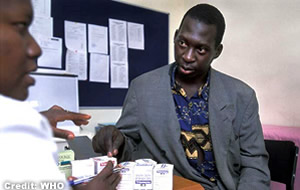 |
 |
TASO
Clinic in Uganda, 2004 |
 |
WHO/Michael
Jensen |
|
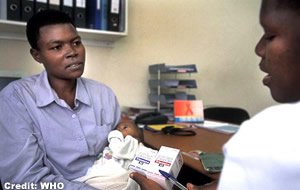 |
| Broader
availability of AIDS treatment boosted HIV testing, offering more people
an incentive to know their HIV status. |
 |
TASO
Clinic in Uganda, 2004 |
 |
WHO/Michael
Jensen |
|
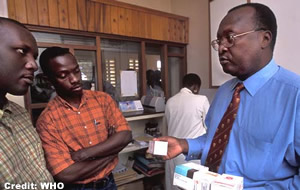 |
| Under"3
by 5" global target, fixed dose combination drugs are becoming more and
more available in developing countries. FDCs offer ease of distribution
and storage and likelihood of greater success in AIDS treatment. |
 |
National
Medical Stores in Uganda, 2004
|
 |
WHO/Michael
Jensen |
|
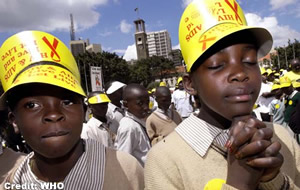 |
| Antiretroviral
treatment brings hope to millions infected and affected by HIV/AIDS. |
 |
At
the launch of "3 by 5" initiative in Nairobi, Kenya
|
 |
WHO/Sven
Torfinn |
|
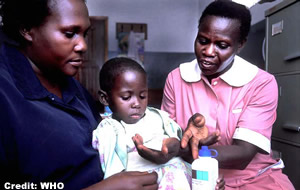 |
| HIV/AIDS
has left more than 14 million orphans in Africa alone. Children and infants
can and should be treated. |
 |
ART
clinic in Uganda's Hoima region provide treatment to AIDS orphans.
|
 |
WHO/Michael
Jensen |
|
 |
 |
Nairobi,
Kenya |
 |
WHO/Sven
Torfinn |
|
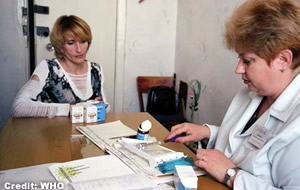 |
 |
Odessa
AIDS Clinic, Ukraine, 2004 |
 |
WHO/Viktor
Suvorov |
|










